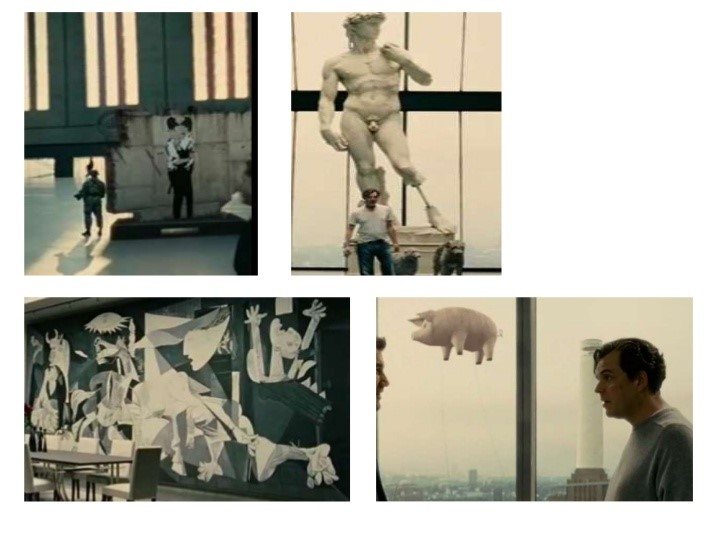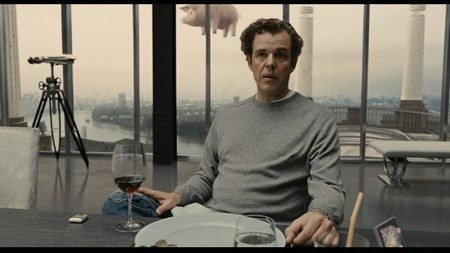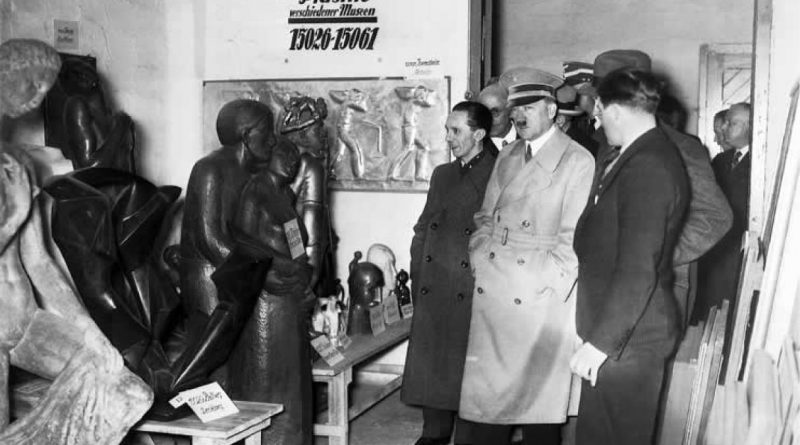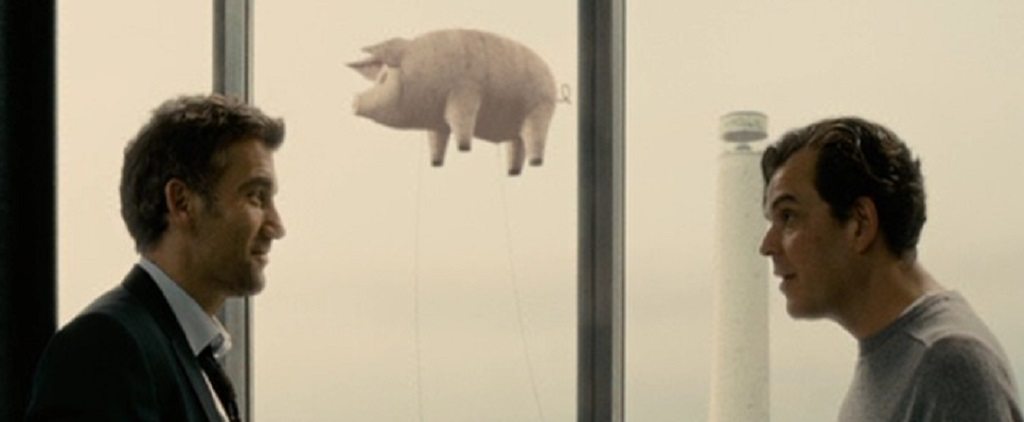[dropcap style=”font-size:100px;color:#992211;”]W[/dropcap]e can learn a lot from the motivations of those who gather up art for the benefit of society. These curators have something very different in mind but the control of art is key to each vision.
___________________________________________
My examples relate to gathering together artefacts with a view to benefit society in very different ways and for very different reasons, they both fail, but they do tell us something about Modernism and its place in our collective imagination.
An effete snob left tragically to mourn
the end of his world from
inside a gilded cage
The present is postmodern how does this effect our ideas of progress?

Images from ‘Children of Men’ 2006 The scene in which Theo (Clive Owen) visits his cousin Nigel (Danny Huston), a government minister and curator of a repository for rescued art.
A Beautiful scene from Children of men has the protagonist visit his cousin Nigel, literally fortified inside a converted power station which is being used by one of civilisations last stable countries (Britain) to house rescued works of art from an increasingly nihilistic and destructive world population.
A disintegration of modernism rather
than a positive movement
in its own right
The scene is a wonderfully crafted symbol of the disintegration of ‘grand narratives’ modernism with its faith in progress and truth is bunkered down in the ultimate ivory tower, all the works of art are sad reminders of a more civilised time, even Picasso’s ‘Guernica’ the subject matter of which is terribly depressing comes out of the belief that such art can mark, criticise and perhaps prevent further atrocity.
Instead the works are ripped out of their context, mixed up, their meanings no longer clear and their legacy as markers of man’s progress put in doubt. The works assume a kind of equivalence in Nigel’s ‘arc of the arts’. Post-modernism in this scene is characterised as a disintegration of modernism rather than a positive movement in its own right and the ultimate depression of the film confirms this critique of postmodernism.
There are no new children, no births and so no vision of the future, in such a world Nigel’s fortified arc seems increasingly desperate he is reminiscent of an effete snob left tragically to mourn the end of his world from inside a gilded cage.

Danny Houston as ‘Nigel’ he literally tries not to think about the chaos outside (academia take note)
The Degenerate Art Show
‘Degenerate Art’ was the title of an exhibition, mounted by the Nazis in Munich in 1937, consisting of modernist artworks which they felt were bad for German society (‘Entartete Kunst’ is German for Degenerate art)
If ‘Nigel’ represents the old modernist aesthete clinging to civilisation with artefacts that stand as literal embodiments of truth and beauty then Hitler is actively trying to destroy these artefacts.

Hitler attending the propaganda event.
‘Modernism’ for Nazism was a disease. Hitler would have been in favour of classical art being included in Nigel’s arc (Michelangelo’s David yes, Guernica no) but progress for Fascism in the arts is to be halted with Rome (both Hitler and Mussolini eventually embraced a monumental version of neo classism)
In a sense Hitler and Nazism was right to be suspicious of modernism since ideas of universalism, individualism and absolute truth would be totally destructive to the sentimental nationalism at the heart of fascism, this attitude also saw the closure of the Bauhaus.

Cover of the exhibition program, Degenerate Art exhibition, 1937. Note the word Kunst, meaning art, in scare quotes
The show was very successful as a propaganda tool its simplicity and the forcefulness of the Nazi message saw many hundreds of thousands of Germans attending at multiple locations with a clear prod to hate what was on show. Eventually though Modernist art and ideals survived to be championed by the ‘free world’ however the effects of two world wars and the holocaust, increased consumerism and the eventual collapse of the soviet union meant that the promise of a utopian modernist future championed by the modernist genius was losing hold and with it the grand narrative which was supposed to replace religious and nationalistic ideas began to crumble which takes us full circle bunkered down in Nigel’s arc with the relics from a time when people still believed in progress.

Natalie Andrews is an artist working with a range of mediums, she has shown her work at the Hoxton Arches in London and is currently working on a number of 3d works alongside painting exploring the links between painting and sculpture;
“I am interested in the way that we relate to one another and with space, how the environments we inhabit structure and dictate these relationships and create both opportunities for emancipation but also the deep alienation and separateness.”






















